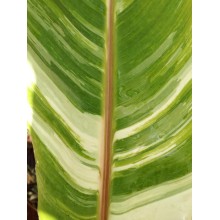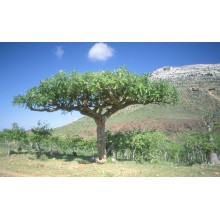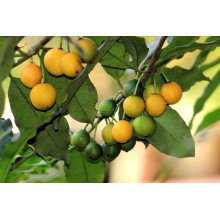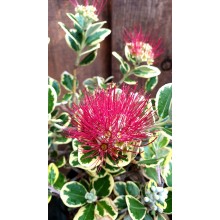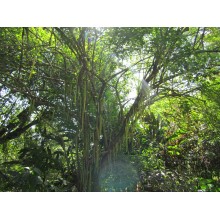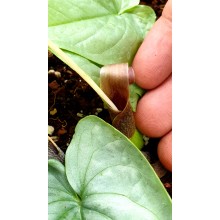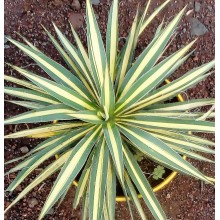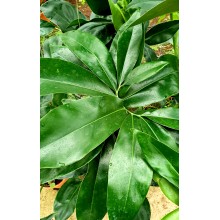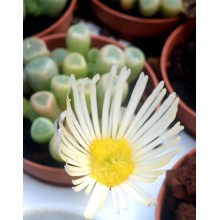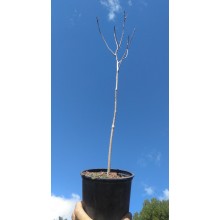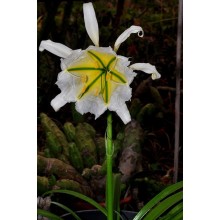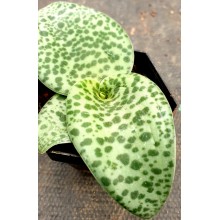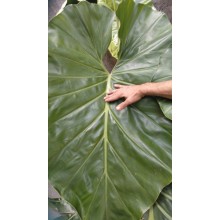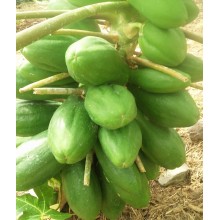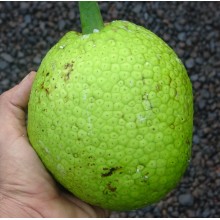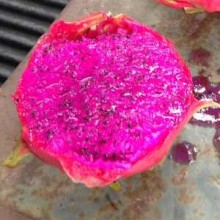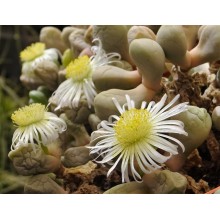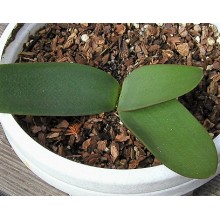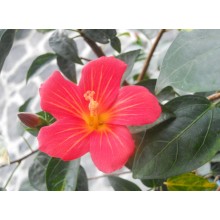Top sellers
Latest top sellers products on Canarius.com

-
Musa 'Variegated Nam Wah'
Musa 'Variegated Nam Wah'
Quite stable variegated clone of the ever popular 'Dwarf Nam Wah', also known as 'Dwarf Pisang Awak'- Stripes occur in different width and tones. It is not a real dwarf. but a a semi-dwarf banana, with more-than-excellent fruits which are very popular in SE Asia and Australia.
186,00 € -
Boswellia elongata
Boswellia elongata
We offer a 2 year old seedling of the rare Socotran Frankincense. Leaves are dark bronze and of a very elegant shape, becoming feather-shaped as soon as the plant reaches a certain size.
38,70 € -
Garcinia intermedia-Rheedia edulis
Garcinia intermedia-Rheedia edulis
Garcinia intermedia is a species of tropical Central American tree which produces tasty fruit. Is known as the lemon drop mangosteen (a name it shares with the closely related and similarly tasting Garcinia madruno). In Spanish it is called mameyito, though it is known as jorco in Costa Rica.
78,90 € -
Metrosideros excelsa 'Variegata'
Metrosideros excelsa 'Variegata'
One of the smallest and finest mesembs. Neohenricia resembles a miniature titanopsis with the typical warty leaf tips, but it creeps in sand and forms a carpet.
38,20 € -
Parmentiera cereifera - Candle Tree
Parmentiera cereifera - Candle Tree
Shrub to small tree, up to 6 m tall, with showy fruits which are both ornamental and edible. It is native to Central America and bears nice bignoniaceous flowers followed by long and thin waxy yellow fruits. up to 60 cm long.
43,20 € -
Typhonium circinnatum
Typhonium circinnatum
Typhonium circinnatum is a dwarf tuberous species that makes a beautiful bright silvery leaf and a small inflorescence held close to the ground.
12,60 € -
Yucca filamentosa 'Color Guard'
Yucca filamentosa 'Color Guard'
Spectacular Japanese selection species of a stemless Yucca species, with a golden central stripe. It grows elegant rosettes of glossy variegated leaves with undulate margins. Frost hardy.
21,60 € -
Thaumatophyllum spruceanum
Thaumatophyllum spruceanum
Self-heading "philodendron" with supreme glossy foliage. Leaves have an unusual architecture, forming a palmate-like leaf, tipically reminiscent of Schefflera actinophylla.
53,40 € -
Fenestraria rhopalophylla - White
Fenestraria rhopalophylla - White
Miniature beauty from South Africa. This succulent has unusual leaves with a translucent window on the top. Beautiful, white, daisy-like flowers. Easy to grow in sand, better with a winter rest.
10,30 € -
Adansonia madagascariensis
Adansonia madagascariensis
Baobabs are deciduous trees. They leaf out late, usually in June and drop their leaves in October to March.
123,20 € -
Leptochiton quitoense
Leptochiton quitoense
This is one of those American Amaryllids that drive collectors crazy. Each bulb produces one very large flower similar to Hymenocallis or Pancratium, but up to 18 cm in diameter!
108,30 € -
Drimiopsis botryoides 'Gamba Village'
Drimiopsis botryoides 'Gamba Village'
This beautiful Drimiopsis with spotted succulent leaves is similar to D.botryoides or D. kirkii, but it comes from the deep heart of Africa.
27,40 € -
Philodendron giganteum
Philodendron giganteum
Giant leaved aroid with glossy deep green leaves - one of the simplest and most beautilful of all. It slowly climbs on huge trees but it can be kept low and it will creep on the ground. It loves hot and wet conditions but it is adaptable to harsher, sunny seaside locations as well as indoors.
109,20 € 156,00 €Reduced price! -
Carica papaya 'Chara'
Carica papaya 'Chara'
This variety of Papaya , with a very sweet taste,It has the peculiarity of producing only equal female fruits, without any need for male flowers.
27,36 € 34,20 €Reduced price! -
Trithrinax brasiliensis
Trithrinax brasiliensis
Beautiful palm from "colder" Brazil, with flat fan leaves and long spiny leaf sheaths.
19,20 € 24,00 €Reduced price! -
Artocarpus x Altilis 'Ma' Afala' - Breadfruit
Artocarpus x Altilis 'Ma' Afala' - Breadfruit
This is the true breadfruit from the Pacific Islands. This is the true breadfruit. Ma'afala, or simply Maafala is the best cultivar for familiar use. It is dwarf and bears small fruits, of very good quality. Lots of fruits! It starts bearing at just 3 m in height and stays rather small for its whole life. Fruits have few or no seeds inside.
290,00 € -
Selenicereus undatus 'Condor'
Selenicereus undatus 'Condor'
"Self-pollinating" cultivar with large oval shaped fruit up to 700g in weight, with a skin which is at first light green with pinkish shades which darken to pinkish red as the fruit ripens. The flesh is dark purple colour with many small dark edible seeds. The taste of this variety is described as very peculiar and pleasant to the palate.
21,70 € -
Jensenobotrya lossowiana
Jensenobotrya lossowiana
Jensenobotrya lossowiana is one of the most exciting plants on Earth because it is restricted to one small location on the skeleton coast of Namibia, which is one of the most extraterrestrial place on our planet! It is found on small cliffs, virtually rainless, surrounded by neverending sand dunes in most directions.
13,20 € -
Brunsvigia marginata
Brunsvigia marginata
Oh my , oh my ! A Brunsvigia with cherry red flowers is a must!
49,50 € -
Hibiscus boryanus
Hibiscus boryanus
Rare hibiscus from the Indian Ocean. We offer the form with orange-red shiny flowers, which is native to Reunion Island. It is an easy to grow tall shrub with ascending branches. It takes wind and drought and some cold too!
43,00 €















